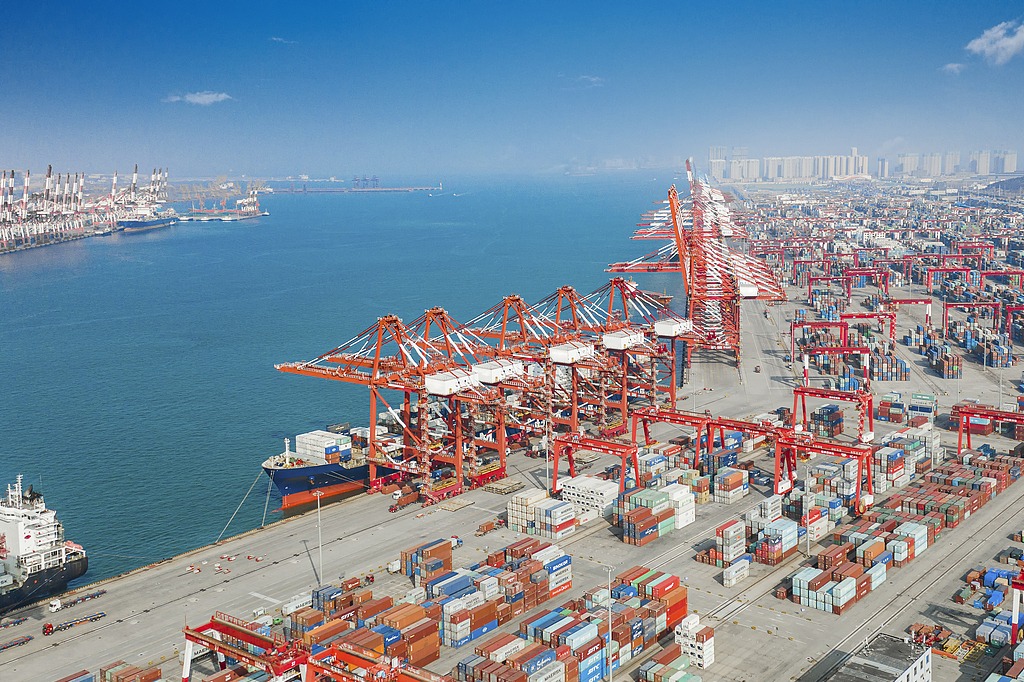Western media's double standard in defense budgets
By Lan Shunzheng | China Daily | Updated: 2024-03-06 07:21

It's no surprise that Tuesday's announcement of a 7.2 percent increase in Chinese military spending has once again dominated global headlines. Many Western media outlets have chosen to focus on this growth, often sensationalizing the "China threat" or potential regional conflicts. However, it's quite absurd for these reports to consistently overlook the fact that China's increased military budget aligns with its expanding national strength, and China just contributes a lot to global peace.
Talking about military budgets and the threat to global peace and security, the US Congress approved a staggering defense budget of $886 billion for 2024. The US' 2024 defense budget accounts for about 40 percent of the total global defense spending, hitting a new high. The US' humongous defense budget makes it clear that it is the biggest cause of global instability.
The US has been waging wars since even before its founding. The white settlers first waged wars and massacred Native Americans and Mexicans, annexing large swathes of Mexican territory. They then annexed Hawaii. After World War II, the US began using its advantages in military, economic, scientific and technological, and cultural and other fields, to launch (or trigger) wars against other countries on the pretext of spreading democracy and protecting human rights. From the end of World War II in 1945 to 2001, the world has seen 248 armed conflicts, with the US initiating 201 of them, including the Korean War, the Vietnam War and the Gulf War.
Since 2001, the US has launched wars against Afghanistan and Iraq, and toppled the governments there in the name of fighting global terrorism, and strengthened its military bases in countries across the world. The motive behind the US' military adventurism is to maintain its global hegemony and prevent the peaceful rise of any country that doesn't toe its line. Far from bringing peace to the world, the US' military actions have raised tensions and caused instability in some regions, with the common people suffering the most.
Take the Iraq War for example. The US invaded Iraq without the authorization of the United Nations, and also on trumped-up charges. The US media glorified the Iraq War as the most important US project to promote democracy and freedom, and protect human rights since the Marshall Plan, and one of the grandest things the US has attempted abroad.
The fact, however, is that between 200,000 and 250,000 civilians have been killed in Iraq, with US troops directly killing about 16,000 of them. Not to mention the war left more than 1 million people homeless. Equally tragically, US weapons such as depleted uranium bombs have caused radioactive contamination in Iraq which would threaten lives for decades. Not for nothing do Iraqis say that US-style "democracy is a lie" that brought destruction, illiteracy, backwardness, death and danger to Iraq.
As for Afghanistan, the US, even after 20 years of occupation, could not improve things in any field. In fact, the situation in Afghanistan is worse than what it was before the US invaded the country.
Behind the US' belligerence is the military-industrial complex, which is a network of the military, arms dealers and politicians. It is a huge interest group that links the US war machine with the economic system, and mainly comprises military institutions, military industries, and cliques of Congress members, defense research institutions and lobby groups.
The US is also the world's largest arms exporter, accounting for more than one-third of global arms exports, from which the US military-industrial complex makes a big fortune. Brown University's Cost of War research project showed that since the launch of the Afghan War in 2001, the Pentagon has spent $14 trillion, of which one-third to half has gone to military contractors.
Moreover, after the Russia-Ukraine conflict broke out, the US, instead of mediating between the two sides to help end the fighting, sent a huge cache of weapons and military equipment to Ukraine.
Worse, more than 30,000 Palestinians have been killed and over 70,000 wounded in the Gaza Strip since Israel's war on Hamas began nearly five months ago, and the US has shipped more than 10,000 tons of armaments on 244 cargo planes and 20 ships to Israel. Such actions have filled the pockets of major US military enterprises at the cost of regional peace and stability, and aggravated the suffering of the people in the region, mainly Palestinians.
That's why Western media reports end up being laughable when they attempt to sensationalize Chinese military spending as a source of "tensions".
The author is a research fellow at the Charhar Institute and a member of the Chinese Institute of Command and Control. The views don't necessarily reflect those of China Daily.
If you have a specific expertise, or would like to share your thought about our stories, then send us your writings at opinion@chinadaily.com.cn, and comment@chinadaily.com.cn.
























